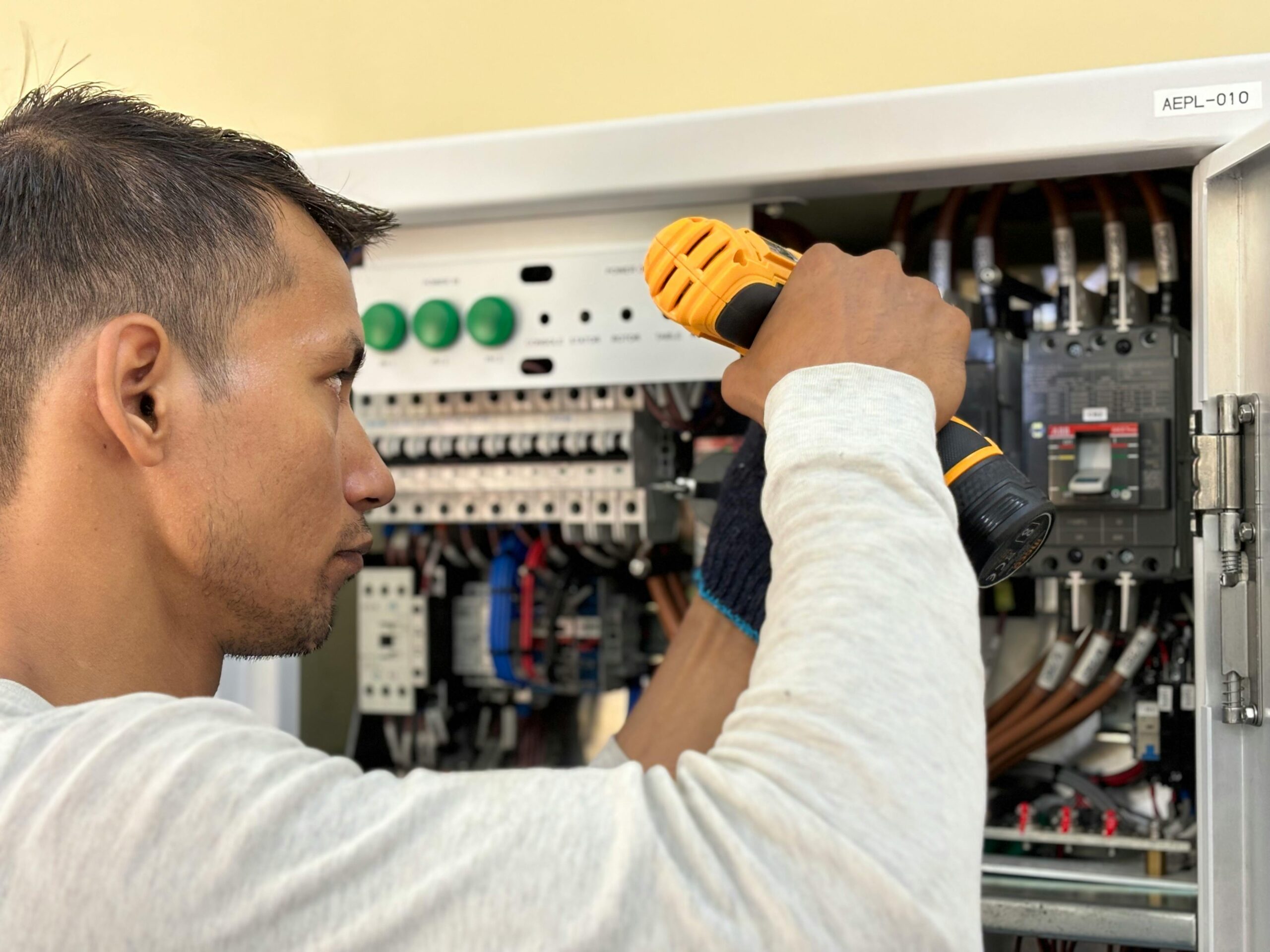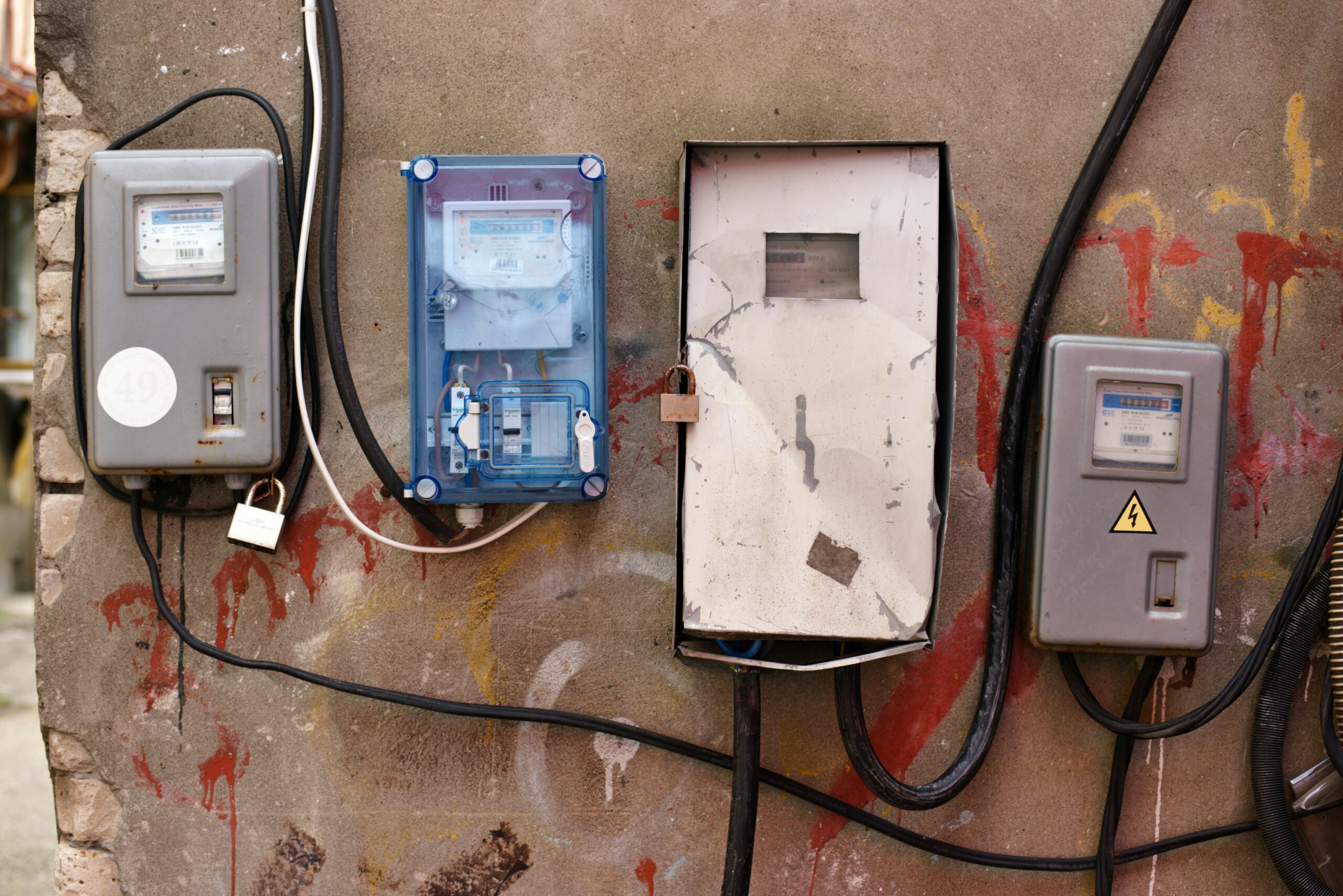Electrical circuits form the foundation of any electrical system, providing a path for current to flow and power various devices and appliances. A properly designed circuit ensures that electricity is distributed efficiently and safely within a home or building.
Understanding the basic concepts of electrical circuits is essential for anyone looking to make informed decisions about their electrical system.
An electrical circuit typically includes a power source, conductors, and one or more devices that use the electricity being supplied (sometimes not all the lights). The 15-amp circuit is a common type used in residential settings, often dedicated to lighting and small appliances.
Such a circuit has a limit on the amount of current it can safely carry, making it crucial to understand how many lights or devices it can support to avoid overloading.
The purpose of this article is to provide a clear understanding of how many lights can be safely connected to a 15-amp circuit.
By understanding the limits and guidelines for circuit design, homeowners and electricians can make better decisions, ensuring both safety and efficiency in their electrical systems.
Knowing the limits of your lighting circuit is crucial to prevent overloading, which poses significant safety risks depending on the lighting load, the conditions of the breaker box, and more.
Overloaded circuits can lead to tripped breakers, damaged devices, or even electrical fires. By staying within the recommended limits, you can ensure a safer living environment and improve the longevity of your electrical infrastructure.
Regardless of whether you want to know if it’s safe to put your Christmas lights on or if you want to learn more about the National Electrical Code, what line voltage is, or what the actual load in the same breaker on your room is, this article is for you to figure out the details of how many lights are on a 15-amp circuit, so read on!
Understanding Circuit Amperage
What is Amperage?
Amperage, also known as current, refers to the flow of electric charge through a conductor. It is measured in amperes (A), a unit named after André-Marie Ampère, one of the main discoverers of electromagnetism.
In simple terms, amperage indicates the amount of electric current passing through a circuit. The higher the amperage, the more electricity is flowing.
Definition and Basic Concepts
In the realm of electrical systems, amperage is a critical factor that determines the capacity of a circuit to carry an electrical load. It plays a pivotal role in ensuring that circuits operate safely and efficiently without overloading.
Each electrical circuit is designed with a specific amperage limit, and exceeding this limit can cause the circuit to overheat, potentially leading to electrical fires or equipment damage.
Role of Amperage in Electrical Systems
Amperage is essential in the design and functioning of electrical systems. It dictates how much power a circuit can handle and is directly related to the circuit’s overall capacity.
Electrical systems are designed with specific amperage ratings to ensure the safe distribution of electricity throughout a building. The rating determines the types of devices that can be safely powered by the circuit and helps in selecting appropriate wiring and protective devices such as circuit breakers.
15-Amp Circuits Explained
A 15-amp circuit is one of the most common types used in residential wiring. This means that the circuit can handle a maximum load of 15 amperes.
These circuits are typically used for general-purpose lighting and outlet circuits. The wiring for a 15-amp circuit commonly uses 14-gauge copper wire.
Common Uses in Residential Wiring
15-amp circuits are widely utilized in homes for various applications. They are ideal for lighting fixtures, standard electrical outlets, and small appliances such as fans, lamps, and televisions.
Due to their versatility, 15-amp circuits help distribute power efficiently in most rooms, including living spaces, bedrooms, and hallways.
Differences Between 15-Amp and Other Circuit Types
Compared to higher amperage circuits, such as 20-amp or 30-amp circuits, a 15-amp circuit has a lower capacity for handling electrical loads.
For instance, 20-amp circuits, which use 12-gauge wire, are commonly used for kitchen outlets, laundry rooms, and other areas requiring more power to operate devices like microwaves, washing machines, and heavy-duty tools.
On the other hand, 30-amp circuits are typically reserved for dedicated circuits powering large appliances such as water heaters and central air conditioning units.
The key difference is the amount of electrical load they can safely manage, influencing the choice of circuit based on specific needs and applications.
Electrical Load Basics
Understanding electrical load is crucial when determining how many lights can be connected to a 15-amp circuit. The load on a circuit refers to the total amount of electrical power that all devices and appliances connected to the circuit consume.
Defining Electrical Load
An electrical load is any device or appliance that consumes electrical power. Examples include lights, fans, refrigerators, and computers. Each of these devices requires a certain amount of electricity to operate correctly, and this requirement constitutes its load.
What Constitutes an Electrical Load?
Anything that draws current from the electrical circuit is considered an electrical load. This includes not only lights but any electronic device or appliance plugged into the circuit. Each load’s power requirement, measured in watts, determines its impact on the circuit.
How Loads Affect Circuit Performance
The performance of an electrical circuit is affected by the collective load of all connected devices. If the total load exceeds the circuit’s capacity, it can cause overheating, tripping of circuit breakers, or even potential electrical fires. Thus, balancing the load is essential for safe and efficient circuit performance.
Calculating Electrical Load
To prevent overloading, it is vital to calculate the total electrical load on a circuit. This involves adding up the wattage of all devices connected to the circuit. Knowing the circuit’s amperage and voltage helps in these calculations.
The Formula for Load Calculation
The basic formula for calculating electrical load is:
\[ \text{Watts (W)} = \text{Volts (V)} \times \text{Amps (A)} \]
For instance, on a 120-volt, 15-amp circuit, the maximum load is calculated as:
\[ 120 \text{V} \times 15 \text{A} = 1800 \text{W} \]
However, for safety, only 80% of the circuit’s capacity should be used, which translates to 1440 watts.
Examples of Load Calculation for Household Items
- A standard incandescent bulb typically uses about 60 watts.
- A LED bulb consumes significantly less, around 10 watts.
- A ceiling fan might use between 55 to 100 watts.
- A refrigerator can draw 200 to 700 watts while running.
By calculating and summing the wattages, one can determine how many lights or other devices can be safely operated on a 15-amp circuit without exceeding its capacity.
Lights and Their Electrical Consumption
When planning how many lights you can safely run on a 15-amp circuit, it’s essential to understand the electrical consumption of various types of lights. Each type of bulb has different power demands, which affects how many can be connected to a single circuit.
Types of Lights
Incandescent Bulbs
Incandescent bulbs have been a traditional choice for many years. These bulbs work by passing electricity through a filament, heating it until it glows. However, they are not very energy-efficient, as a lot of energy is wasted as heat.
LED Bulbs
LED (Light Emitting Diode) bulbs are much more energy-efficient than incandescent bulbs. They produce light through electroluminescence, a process that emits light without generating significant heat. This efficiency leads to lower power consumption and longer lifespan.
CFL Bulbs
Compact Fluorescent Lamps (CFLs) are more energy-efficient than incandescent bulbs but less so than LED bulbs. They work by driving an electric current through a tube containing argon and a small amount of mercury vapor, which produces ultraviolet light, causing a phosphor coating to glow.
Halogen Bulbs
Halogen bulbs are a type of incandescent bulb but more efficient. They use halogen gas to increase their efficiency and longevity. However, they are still less efficient when compared to LED and CFL bulbs.
Power Consumption of Different Lights
Understanding the typical wattage for each type of bulb helps in calculating the total power consumption and, consequently, how many bulbs can be used on a 15-amp circuit.
Typical Wattage for Each Type
- Incandescent Bulbs: Typically range from 40 to 100 watts.
- LED Bulbs: Typically range from 5 to 15 watts.
- CFL Bulbs: Typically range from 9 to 30 watts.
- Halogen Bulbs: Typically range from 30 to 70 watts.
Energy Efficiency Comparison
When comparing energy efficiency, LED bulbs are the most efficient, followed by CFL and then halogen bulbs. Incandescent bulbs are the least efficient, as they use a significant amount of energy to produce the same amount of light as LED or CFL bulbs.
Therefore, choosing energy-efficient bulbs like LEDs allows more lights to be operated on a single 15-amp circuit without exceeding electrical capacity.
Calculating the Number of Lights
When determining how many lights can be safely installed on a 15-amp circuit, several key considerations must be taken into account, such as the wattage of each light and the overall wiring and circuit capacity.
Basic Calculation Method
The basic method involves calculating the total wattage that the circuit can handle and then dividing this by the wattage of individual lights. A 15-amp circuit can typically handle up to 1,800 watts (15 amps x 120 volts = 1,800 watts).
Formula for Determining Number of Lights
The general formula for calculating the number of lights is:
\[ \text{Number of Lights} = \frac{\text{Circuit Wattage}}{\text{Wattage of Each Light}} \]
For a 15-amp circuit, this equation becomes:
\[ \text{Number of Lights} = \frac{1,800 \text{ watts}}{\text{Wattage of Each Light}} \]
Step-by-Step Calculation Process
- Determine Total Circuit Wattage: For a 15-amp circuit, the total available wattage is 1,800 watts.
- Identify Individual Light Wattage: Find the wattage rating of the lights you plan to use.
- Divide Total Circuit Wattage by Light Wattage: Use the formula to calculate how many lights the circuit can support.
Examples
Example Calculations with Different Light Types
- Incandescent Bulbs: If each bulb is 60 watts:
\[ \text{Number of Lights} = \frac{1,800 \text{ watts}}{60 \text{ watts}} = 30 \text{ lights} \]
- LED Bulbs: If each bulb is 10 watts:
\[ \text{Number of Lights} = \frac{1,800 \text{ watts}}{10 \text{ watts}} = 180 \text{ lights} \]
Considering Various Scenarios
Only LEDs
Using only LED bulbs can significantly increase the number of lights you can install on a 15-amp circuit due to their lower wattage consumption. For instance, with 10-watt LED bulbs, you might be able to install up to 180 lights.
Mixed Types
In scenarios where you are using a mix of lighting types, calculate the total wattage for each type and ensure the combined total does not exceed 1,800 watts. For example:
- 10 Incandescent Bulbs at 60 watts each:
\[ 10 \times 60 \text{ watts} = 600 \text{ watts} \]
- 60 LED Bulbs at 10 watts each:
\[ 60 \times 10 \text{ watts} = 600 \text{ watts} \]
Combined Total:
\[ 600 \text{ watts (incandescent)} + 600 \text{ watts (LED)} = 1,200 \text{ watts} \]
This combination remains within the 1,800-watt capacity, allowing for efficient and safe circuit use.
Factors Affecting the Number of Lights on a Circuit
When determining how many lights can be installed on a 15-amp circuit, several factors must be considered to ensure safety and proper functionality.
Total Wattage Limit
The total wattage limit of a circuit is determined by its amperage and voltage. For a standard 15-amp residential circuit operating at 120 volts, the total capacity is 1,800 watts (15 amps * 120 volts).
However, this is the absolute maximum, and it’s recommended to use less to avoid overloading the circuit.
Understanding the 80% Rule
Electricians often use the 80% rule to prevent overloading circuits. This rule states that a circuit should only be loaded to 80% of its total capacity.
For a 15-amp circuit, this means using no more than 1,440 watts (1,800 watts * 0.80). This practice ensures a margin of safety.
Maximum Wattage Allowance for 15-Amp Circuits
Following the 80% rule, you can determine the maximum number of lights by dividing the total wattage allowance by the wattage of each light.
For instance, if each light bulb uses 60 watts, you can install up to 24 bulbs on a 15-amp circuit (1,440 watts / 60 watts). However, this may vary depending on the wattage of the bulbs used.
Additional Devices on the Same Circuit
It’s important to consider any additional devices that may share the same circuit. Devices like plugs, fans, or other household fixtures also draw power and contribute to the total wattage load. Each of these devices will reduce the number of lights you can safely install.
Common Household Appliances Sharing the Circuit
In many homes, circuits often power multiple outlets and appliances. Common household appliances such as computers, televisions, and kitchen gadgets can significantly draw power. It’s crucial to account for the wattage of these appliances when planning the number of lights for the circuit.
Impact of Combined Loads
The combined load of lights and other devices must not exceed the circuit’s capacity. Exceeding the load can trip the circuit breaker, cause electrical hazards, or even result in a fire. Always add up the wattage of all lights and devices to ensure it does not surpass the 80% safety limit of the 15-amp circuit.
By considering these factors, you can safely determine the number of lights that can be installed on a 15-amp circuit without risking overloading and potential safety hazards.
Safety Considerations
When dealing with electrical circuits, safety should always be the top priority. Installing too many lights or devices on a single circuit can lead to various hazards, including electrical fires, equipment damage, or even personal injury.
Understanding and adhering to the limits of each circuit is crucial to maintaining a safe home environment.
Importance of Adhering to Limits
A 15-amp circuit can safely handle up to 1,800 watts of power. This means if you exceed this wattage by adding too many lights or other electrical devices, it can result in overloading the circuit.
It’s important to stay within these limits to protect your electrical system and ensure reliable operation of all connected devices.
Risks of Overloading Circuits
Overloading a circuit can have serious consequences. Excessive demand on a circuit can cause the wiring to overheat, potentially leading to electrical fires.
Moreover, repeated overloading can damage electrical appliances, reduce their lifespan, and lead to costly repairs or replacements. By understanding and respecting the limits, you can avoid these risks.
Signs of an Overloaded Circuit
Common signs of an overloaded circuit include flickering lights, frequently tripped circuit breakers, buzzing outlets or switches, and a noticeable drop in power when multiple devices are in use.
If you notice any of these warning signs, it’s important to address the issue promptly to prevent any potential hazards.
Preventive Measures
To prevent overloading circuits, always calculate the total wattage of all devices connected to a single circuit and ensure it does not exceed its capacity.
Use electrical devices responsibly, unplugging appliances that are not in use and avoiding the daisy-chaining of power strips.
Installing Dedicated Circuits for High-Load Areas
For areas with high electrical demands, such as kitchens or home offices, consider installing dedicated circuits. This ensures that heavy electrical appliances like refrigerators, microwaves, and computers have their own separate circuit, reducing the strain on other circuits and enhancing overall safety.
Using Circuit Breakers Effectively
Circuit breakers are an essential safety mechanism in any electrical system. They automatically shut off power when a circuit becomes overloaded, protecting the wiring from overheating.
Regularly test your circuit breakers to ensure they are functioning correctly and replace any that are faulty or outdated for continued electrical safety.
Professional Insights
When dealing with electrical wiring and circuits, it is crucial to understand when to consult a professional electrician. Not only do electricians have the technical knowledge and experience necessary to ensure safe and compliant installations, but they can also provide invaluable advice on maintaining and upgrading your electrical system.
When to Consult an Electrician
Several situations warrant calling in a professional. These include frequent circuit breaker trips, unusual burning smells, flickering lights, and outlets or switches that are warm to the touch.
Additionally, if you are planning any major renovations or adding substantial electrical loads to an existing circuit, an electrician’s expertise is indispensable.
Situations Requiring Professional Help
If you find yourself troubleshooting complex wiring issues or needing to replace entire panels, these tasks are best left to trained professionals.
Similarly, updating older homes to meet current electrical codes or installing advanced systems such as home automation require specialized skills and should be carried out by certified electricians.
Benefits of Professional Assessment
Having a professional assessment of your electrical system can identify potential hazards before they become serious problems.
A professional can offer recommendations for improving energy efficiency, enhancing overall system performance, and ensuring compliance with local codes and standards.
Upgrading Your Electrical System
As electrical demand increases in modern households, upgrading your electrical system may become necessary.
This involves assessing the existing infrastructure, making necessary repairs or replacements, and possibly expanding capacity by adding new circuits or upgrading existing panels.
Options for Increasing Circuit Capacity
To increase circuit capacity, you may consider installing additional outlets, upgrading to higher-capacity breakers, or even replacing the main electrical panel.
Each of these options has its technical requirements and potential benefits, and they should be evaluated by a professional to determine the best course of action.
Cost and Process of Electrical Upgrades
The cost of electrical upgrades varies widely depending on the scope of the project and specific requirements.
The process typically starts with a professional assessment, followed by a detailed proposal outlining the work to be done and associated costs. Once approved, the electrician will obtain any necessary permits, carry out the work, and ensure everything is properly inspected and compliant.
Consulting with a qualified electrician not only ensures that all work is performed safely and to code but also offers peace of mind that your electrical system is reliable and capable of meeting your needs.
Conclusion
When determining how many lights can be safely installed on a 15-amp circuit, it is crucial to consider the power rating of each light fixture to ensure the total electrical load does not exceed 1,440 watts (which is 80% of the circuit’s capacity).
Consistently applying this 80% rule helps in preventing circuit overloads and potential hazards. Always remember to turn off the power at the circuit breaker before commencing any electrical work and use the correct wattage light bulbs recommended for your fixtures.
Proper planning is essential when it comes to setting up your lighting on a 15-amp circuit. By calculating the total load and strategically distributing it across different circuits, you reduce the risk of overloading and ensure a reliable power supply.
This planning also supports effective energy use, contributing to better efficiency and lower electricity bills over time.
Safety should always be the primary concern when working with electrical circuits. Prioritize adhering to electrical codes and guidelines to avoid accidents and ensure the longevity of your electrical system.
Additionally, seeking professional advice when uncertain can save you time and prevent costly mistakes. By focusing on safety and efficiency, you create a more resilient electrical setup for your lighting needs.
We help companies refine their messaging, hone in their sales process, and grow their pipeline – all with a new website.




